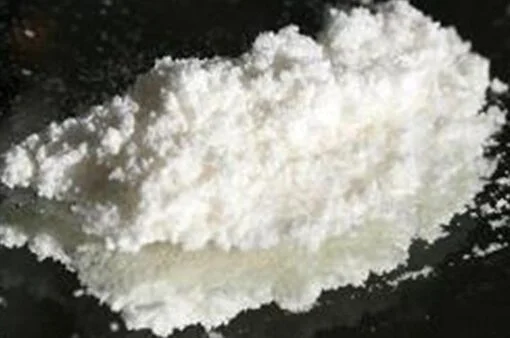It’s a quiet pandemic, one that doesn’t make headlines with daily case counts but devastates communities, families, and healthcare systems with equal force. From the opioid crisis gripping North America to the rising synthetic drug markets in Asia and Europe, the use of illegal drugs is surging worldwide.
This isn’t a problem confined to any single country or demographic. It’s a complex, borderless phenomenon driven by a confluence of factors that demand our attention and a radical rethinking of our approach.https://medschemicalsuppliers.com/
By the Numbers: A Snapshot of a Growing Crisis
While data on illicit activities is inherently difficult to capture, the trends are unmistakable:
- The UN Office on Drugs and Crime (UNODC) World Drug Report consistently highlights record-high production of cocaine and opium, suggesting greater availability.
- Drug use disorders are claiming more lives, with overdose deaths reaching tragic new peaks in many countries.
- The variety of substances on the market is exploding, with new psychoactive substances (NPS) appearing faster than regulators can control them.
But why is this happening now? The reasons are as interconnected as our globalized world.
The Perfect Storm: Key Drivers of the Global Surge
1. The Pandemic’s Shadow: Isolation and Mental Health
The COVID-19 pandemic acted as a powerful accelerant. Lockdowns, social isolation, economic uncertainty, and heightened anxiety created a fertile ground for substance use as a coping mechanism. Access to treatment and support networks was severely disrupted, pushing many vulnerable individuals deeper into addiction.
2. The Synthetics Revolution: Cheaper, Stronger, More Dangerous
The drug market has undergone a fundamental shift. We are moving from plant-based drugs (like opium and coca) to synthetic drugs mass-produced in laboratories.
- Fentanyl: A potent synthetic opioid, is 50 times stronger than heroin. A few milligrams can be lethal, and it’s often mixed with other drugs, like fake prescription pills, with deadly consequences.
- New Psychoactive Substances (NPS): Often marketed as „legal highs“ or „research chemicals,“ these synthetic cannabinoids and cathinones („bath salts“) are designed to mimic traditional drugs while skirting legal bans.
These synthetics are cheaper to produce and easier to traffic, making them highly profitable for criminal organizations.
3. The Digital Marketplace: Drugs on Demand
The rise of the dark web has revolutionized drug distribution. Cryptocurrencies provide anonymous payment, while encrypted messaging apps facilitate communication. A user can now order drugs with the same ease as ordering a pizza, with delivery directly to their doorstep, reducing the perceived risk and stigma of acquisition.
4. Evolving Criminal Enterprises
Transnational criminal networks have become more agile and sophisticated. They have diversified their portfolios, using global supply chains to traffic both traditional and synthetic drugs. They adapt quickly to law enforcement tactics and exploit governance gaps in different regions.
5. The Underlying Social Fabric: Despair and Disconnection
Beyond the immediate triggers, there are deeper, systemic issues at play. Economic inequality, a lack of opportunity, and social disintegration in many communities create an „epidemic of despair.“ For many, drugs become a way to escape a reality with limited prospects for a better future.
The Shifting Landscape: Not Your Grandfather’s Drug Problem
The stereotype of the drug user is dangerously outdated. Today’s crisis touches:
- Professionals using stimulants to cope with demanding work cultures.
- Young people experimenting with a bewildering array of synthetic pills at parties.
- Individuals with untreated pain or mental health disorders self-medicating with whatever they can find.
The lines are blurred, and the substances are more unpredictable and toxic than ever before.
A Crossroads for Policy: Punishment vs. Public Health
For decades, the global response has been dominated by the „War on Drugs,“ focusing on criminalization and law enforcement. While interdiction remains necessary, it has failed to curb either supply or demand.
A growing number of countries, from Portugal to Switzerland to Canada, are pioneering a different approach: treating drug use primarily as a public health issue.
This shift involves:
- Harm Reduction: Implementing measures like supervised consumption sites, needle exchanges, and widespread distribution of naloxone (an overdose-reversing drug) to save lives.
- Decriminalization: Removing criminal penalties for personal possession to reduce stigma and allow users to seek help without fear of incarceration.
- Investment in Treatment: Making evidence-based treatment, including medication-assisted therapy, accessible and affordable for all who need it.
- Prevention and Education: Shifting from „just say no“ campaigns to honest, science-based education about the real risks of modern drugs.
A Path Forward
The global rise in illicit drug use is a symptom of deeper societal ills. It is a crisis of mental health, of economic despair, and of disconnection. To reverse this tide, we must move beyond a purely punitive mindset.
The challenge is monumental, but the solution lies in compassion, evidence, and a collective commitment to building a world where people have healthier ways to cope, connect, and find hope. The silent surge demands a vocal response—one that prioritizes human life and dignity above all else.

